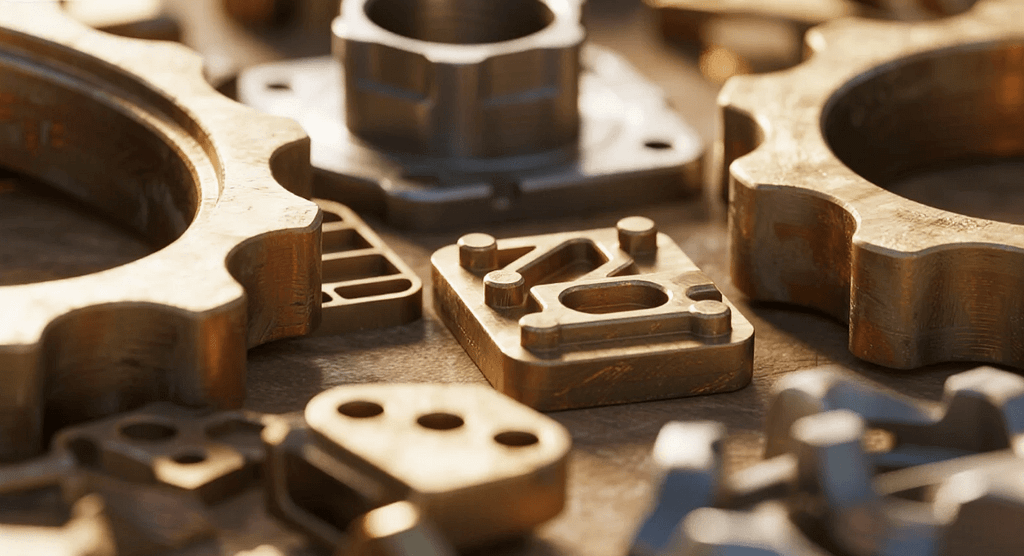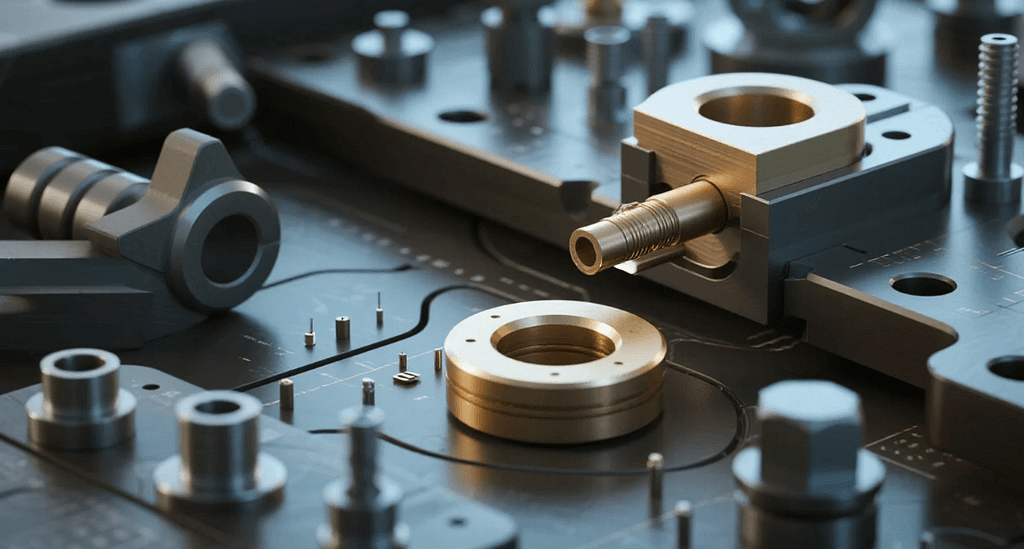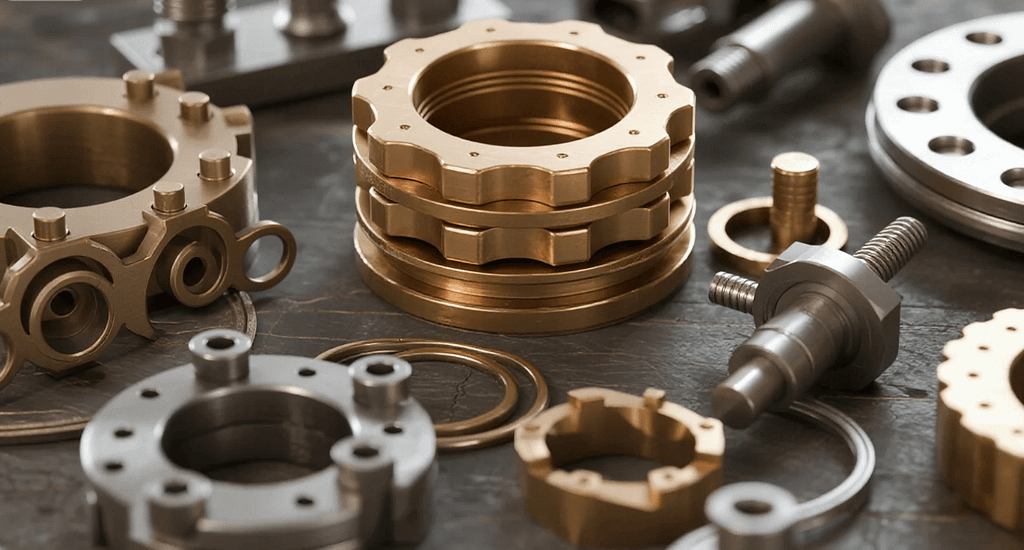In the fast-evolving world of high-precision manufacturing, engineers and designers constantly seek innovative ways to produce small, intricate metal components that demand exceptional strength and complex geometries. Often overlooked by those unfamiliar with its capabilities, metal injection molding (MIM) stands as a powerful solution, bridging the gap between traditional metalworking and advanced polymer molding. This sophisticated process creates highly detailed metal parts, offering remarkable efficiency and versatility. This article delves into the core principles of metal injection molding, exploring its distinct advantages and its profound impact on the creation of sophisticated industrial models. For businesses, like キャプテック, that require high-quality, repeatable metal components for their prototypes or mass production, understanding this pivotal technology is key to unlocking significant value and accelerating their product development cycles.
What Exactly is Metal Injection Molding?
At its essence, metal injection molding is a cutting-edge manufacturing process that uniquely combines the shaping versatility of plastic injection molding with the material strength and integrity of powdered metallurgy. It begins by creating a specialized “feedstock” – a homogeneous mixture of finely powdered metal and a polymer binder. This moldable material is then injected into a mold cavity, much like standard plastic injection molding. Following injection and cooling, the resulting “green” part undergoes a critical debinding step to remove the polymer binder, after which it’s sintered at extremely high temperatures in a controlled furnace. This final sintering process fuses the metal particles, achieving the part’s final density, strength, and mechanical properties. The outcome is a near-net-shape metal component boasting excellent properties and the ability to realize complex geometries.
Unpacking the Metal Injection Molding Process

The journey of a metal part through the MIM process involves several intricate and carefully controlled stages, each vital for achieving the final product’s superior quality and precision:
1. Feedstock Preparation: The Foundation of Precision
The process kicks off with the meticulous blending of very fine metal powders (typically less than 20 microns in size) with a specific thermoplastic binder system. This mixture is then heated and kneaded to create a homogeneous, flowable “feedstock” – a granular material ready for injection. The precise ratio of metal powder to binder is absolutely crucial for successful molding, as well as for the subsequent debinding and sintering steps, directly influencing the final part’s density and integrity.
2. Injection Molding: Shaping Complexity
The prepared feedstock is fed into a specialized injection molding machine. Similar to plastic injection molding, the heated feedstock is injected under high pressure into a precisely engineered mold cavity. This high-pressure injection ensures that even the most intricate features of the mold are filled, forming a “green” part. This green part is solid but still contains a significant amount of the polymer binder that provided its shape during molding. A key advantage here is the capability to create highly complex shapes, including intricate undercuts, internal threads, and detailed channels, with high repeatability.
3. Debinding: The Binder’s Departure
The “green” part, while structurally sound in its initial form, still holds the polymer binder that gave it shape. This binder must be meticulously removed to allow the metal particles to fuse effectively during the subsequent sintering stage. Debinding is a critical and highly controlled step, which can be achieved through various methods, including solvent extraction, thermal decomposition, or catalytic debinding. This process leaves a “brown” part, which is fragile but now primarily composed of interconnected metal powder, ready for the crucial densification step.
4. Sintering: Achieving Metallic Strength
The “brown” parts are then transferred to a high-temperature furnace operating under a precisely controlled atmosphere. During sintering, the metal particles fuse together at temperatures just below their melting point. The part densifies significantly, shrinking isotropically (uniformly in all directions) as the voids left by the binder are reduced and the metal particles bond. This step gives the MIM part its final high density (typically 95-99% theoretical density), exceptional strength, and other desired mechanical properties. Precise control over the sintering temperature profile and atmosphere is absolutely essential to achieve the desired material characteristics and optimal dimensional accuracy.
5. Post-Sintering Operations (Optional Refinements)
After sintering, MIM parts are typically near net-shape, meaning they require minimal or no additional machining. However, some specific applications may demand secondary operations such as surface finishing (e.g., polishing, plating for aesthetic or functional purposes), heat treatment for further property enhancement (like increased hardness or toughness), or light machining for extremely tight tolerances on critical features that exceed the standard MIM capabilities.
The Compelling Advantages of a Metal Injection Molding Provider
For businesses requiring small, complex metal components, partnering with a professional metal injection molding provider offers numerous compelling benefits that streamline production and enhance product quality significantly.
Production of Highly Complex and Intricate Geometries
One of the most significant advantages of metal injection molding is its extraordinary ability to create extremely intricate and complex geometries that are often impossible or cost-prohibitive to achieve with traditional machining, casting, or even some additive manufacturing methods. This includes features like very thin walls, internal threads, cross-holes, undercuts, and highly detailed internal or external designs. MIM empowers designers to consolidate multiple components into a single, complex part, dramatically reducing assembly costs, simplifying supply chains, and improving overall product integrity and reliability.
High Volume Production and Cost-Effectiveness
While the initial tooling cost for MIM can be higher than some alternative methods, the per-part cost in high-volume production drops dramatically, making it exceptionally economical. The rapid cycle times of the injection molding phase, coupled with the ability to produce multiple parts per mold cavity (multi-cavity molds), make metal injection molding an incredibly efficient process for mass manufacturing. This positions MIM as a highly economical choice for scaling up production of small, complex metal components, offering significant savings over time compared to conventional methods like CNC machining for similar volumes.
Exceptional Material Properties and High Density
MIM parts achieve nearly full theoretical density (typically 95-99%), which results in mechanical properties that are highly comparable to, and often surpass, those of wrought materials. This means the parts are incredibly strong, durable, and reliable for demanding applications. A very wide range of ferrous and non-ferrous metals can be processed, including various stainless steels (e.g., 17-4 PH, 316L), low alloy steels, copper, tungsten, and even some specialty alloys, allowing for tailored material performance to meet specific engineering requirements.
Superior Surface Finish and Tight Tolerances
MIM parts typically emerge from the sintering furnace with a very good surface finish, often requiring minimal post-processing. Furthermore, the process is capable of achieving remarkably tight dimensional tolerances, usually within ±0.3% to ±0.5% of the nominal dimension. This inherent precision significantly reduces the need for expensive secondary machining operations, saving both valuable time and considerable cost in the overall manufacturing process.
Miniaturization Capabilities for Advanced Designs
Metal injection molding truly excels at producing very small, intricate metal parts. This capability is absolutely critical for industries driving miniaturization, such as medical devices (e.g., surgical instruments, implants), consumer electronics (e.g., smartphone components, micro-connectors), and micro-robotics, where creating components that are lighter and more compact while maintaining high performance is a key design driver.
Metal Injection Molding in the Realm of Precision Industrial Models

While often viewed primarily as a production-scale manufacturing method, a professional metal injection molding service plays an increasingly vital and sophisticated role in the development and refinement of precision industrial models, particularly for advanced prototyping and functional validation.
Prototyping with Production-Grade Material and Process Fidelity
For high-volume metal components, understanding precisely how the part will behave when produced through the actual mass manufacturing process is crucial. A specialized metal injection molding service can provide prototypes that are not just geometrically accurate but are also made from the same material and using a process incredibly similar to eventual mass production. This “production-intent” prototyping is invaluable for comprehensive testing, rigorous validation, and predicting real-world performance more accurately than models made with other prototyping methods like CNC machining (which is a subtractive process) or certain types of 3D printing (which might use different materials or have different internal structures). These prototypes help bridge the gap between design and high-volume reality.
Exacting Form, Fit, and Assembly Validation for Complex Systems
Precision industrial models created via MIM allow for rigorous validation of how complex metal components will assemble and integrate seamlessly into a larger system. Engineers can conduct precise fit checks, ensure proper clearances between moving parts, and test the functional interplay of intricate mechanisms. For example, a miniature gearbox prototype with MIM gears can be assembled and tested to confirm smooth operation, minimal backlash, and long-term durability, providing critical feedback on the design before substantial full-scale tooling investment is made.
Rigorous Functional Testing and Performance Prediction
The high density and excellent mechanical properties inherent to MIM parts make them ideally suited for functional testing of industrial models. Prototypes can undergo stress tests, fatigue tests, and wear resistance evaluations that accurately reflect the demanding conditions the final product will face in its operational environment. This provides highly reliable data for design refinement and helps ensure the longevity, safety, and optimal performance of the end product. For industries like firearms, automotive, or aerospace, this level of testing with production-representative parts is absolutely essential for compliance and market readiness.
Strategic Design for Manufacturability (DFM) Feedback
Engaging a metal injection molding service early in the design process enables crucial Design for Manufacturability (DFM) analysis. Experts in MIM can meticulously review component designs to identify potential molding challenges such as uneven wall thickness, sharp internal corners, complex gate locations, or features that might complicate debinding or sintering. They proactively offer practical modifications to optimize the part for efficient, high-quality MIM production. This collaborative and proactive approach saves significant time and money by preventing costly redesigns and retooling later in the product development and mass production phases.
Selecting Your Ideal Metal Injection Molding Partner
Choosing the right metal injection molding service is paramount for the success of any project involving complex metal parts, especially for precision industrial models. Several factors warrant careful consideration when making this critical decision.
Deep Expertise and Proven Experience
Look for a service provider with extensive and demonstrable experience in metal injection molding, specifically with the metal alloys and part complexities relevant to your application. Their deep technical expertise in feedstock preparation, mold design, debinding methods, and sintering processes will be invaluable for achieving optimal results and navigating challenges.
Advanced Equipment and Robust Process Control
Ensure the service utilizes state-of-the-art injection molding machines, advanced and flexible debinding capabilities, and precision sintering furnaces with highly robust atmosphere control and temperature profiling. Sophisticated in-process monitoring and comprehensive quality control systems are also crucial for consistent, high-quality output.
Comprehensive Quality Assurance and Industry Certifications
A reputable metal injection molding service will have stringent quality management systems in place, often backed by internationally recognized certifications like ISO 9001. Depending on your industry, additional specific standards such as AS9100 for aerospace or ISO 13485 for medical devices may be critical. This strong commitment to quality ensures reliable, consistent, and traceable part production.
Collaborative Approach and DFM Support
An ideal partner offers clear, open communication channels and works collaboratively with your design team throughout the project lifecycle. Their willingness to provide detailed DFM feedback, offer informed material recommendations, and provide comprehensive support during both the prototyping and production phases is a strong indicator of a valuable and enduring partnership.
The Evolving Horizon of Metal Injection Molding and Industrial Models
The landscape of metal injection molding continues its dynamic evolution, driven by relentless advancements in material science, innovative binder systems, and increasingly sophisticated process control. We can anticipate the development of even newer, higher-performance metal alloy feedstocks, finer powder technologies for achieving even greater detail and surface integrity, and more highly integrated, automated production lines. Hybrid processes, potentially combining MIM with other technologies like advanced additive manufacturing for specific features, may also become more prevalent, pushing the boundaries of what’s achievable. For precision industrial models, these innovations will lead to even faster prototyping cycles, enhanced material performance that more closely mirrors final product, and the ability to produce increasingly complex and functional metal models that are virtually indistinguishable from their eventual mass-produced counterparts. The ongoing commitment to efficiency, sustainability, and uncompromising quality will undoubtedly remain at the forefront of these advancements.
結論
Metal injection molding is a sophisticated and highly effective manufacturing process that offers unparalleled capabilities for producing small, complex metal parts with high precision and excellent mechanical properties. For businesses seeking high-quality industrial model services, leveraging a specialized metal injection molding provider offers a strategic and distinct advantage. It enables the creation of prototypes with production-like characteristics, allowing for rigorous functional testing and invaluable design validation before committing to mass production. As industries continue to demand greater intricacy, miniaturization, and performance from metal components, metal injection molding will undoubtedly remain a cornerstone technology, driving innovation and shaping the future of product development and industrial modeling.
よくあるご質問
Q1: What types of parts are best suited for metal injection molding?
A1: Metal injection molding is ideal for small, highly complex metal parts that require high strength, excellent surface finish, and precision, especially those produced in high volumes where traditional machining would be too expensive or impossible.
Q2: What are the main benefits of using MIM for prototypes in industrial models?
A2: MIM prototypes for industrial models offer production-grade material properties, accurate representation of final part geometry, and the ability to conduct realistic functional testing, providing more reliable design validation than other prototyping methods.
Q3: What metals can be used in metal injection molding?
Q3: A wide range of metals, including various stainless steels (e.g., 17-4 PH, 316L), low alloy steels, tool steels, tungsten alloys, copper alloys, and some specialty alloys like nickel-based superalloys, can be used.
Q4: How does the “debinding” step work in metal injection molding?
Q4: Debinding is the process of removing the polymer binder from the “green” part (after molding) using methods like solvent extraction, thermal decomposition, or catalytic processes. This creates a porous “brown” part ready for sintering.
Q5: Is metal injection molding cost-effective for low-volume production?
Q5: The initial tooling cost for MIM can be significant. However, for complex parts that would require extensive machining, MIM can still be cost-effective even at lower volumes as it reduces per-part processing costs. For true one-off or very low-volume needs, additive manufacturing might be more suitable.
Q6: What level of precision can metal injection molding achieve?
Q6: Metal injection molding can achieve tight dimensional tolerances, typically around ±0.3% to ±0.5% of the nominal dimension, with very good surface finishes, often requiring minimal post-sintering machining.
Q7: How does MIM compare to metal 3D printing?
Q7: MIM is generally better for higher volume production of highly detailed, small, and complex parts with excellent mechanical properties and surface finishes. Metal 3D printing excels at lower volumes, extremely complex internal geometries (like lattice structures), and faster design iterations without needing tooling. They are often complementary technologies.
